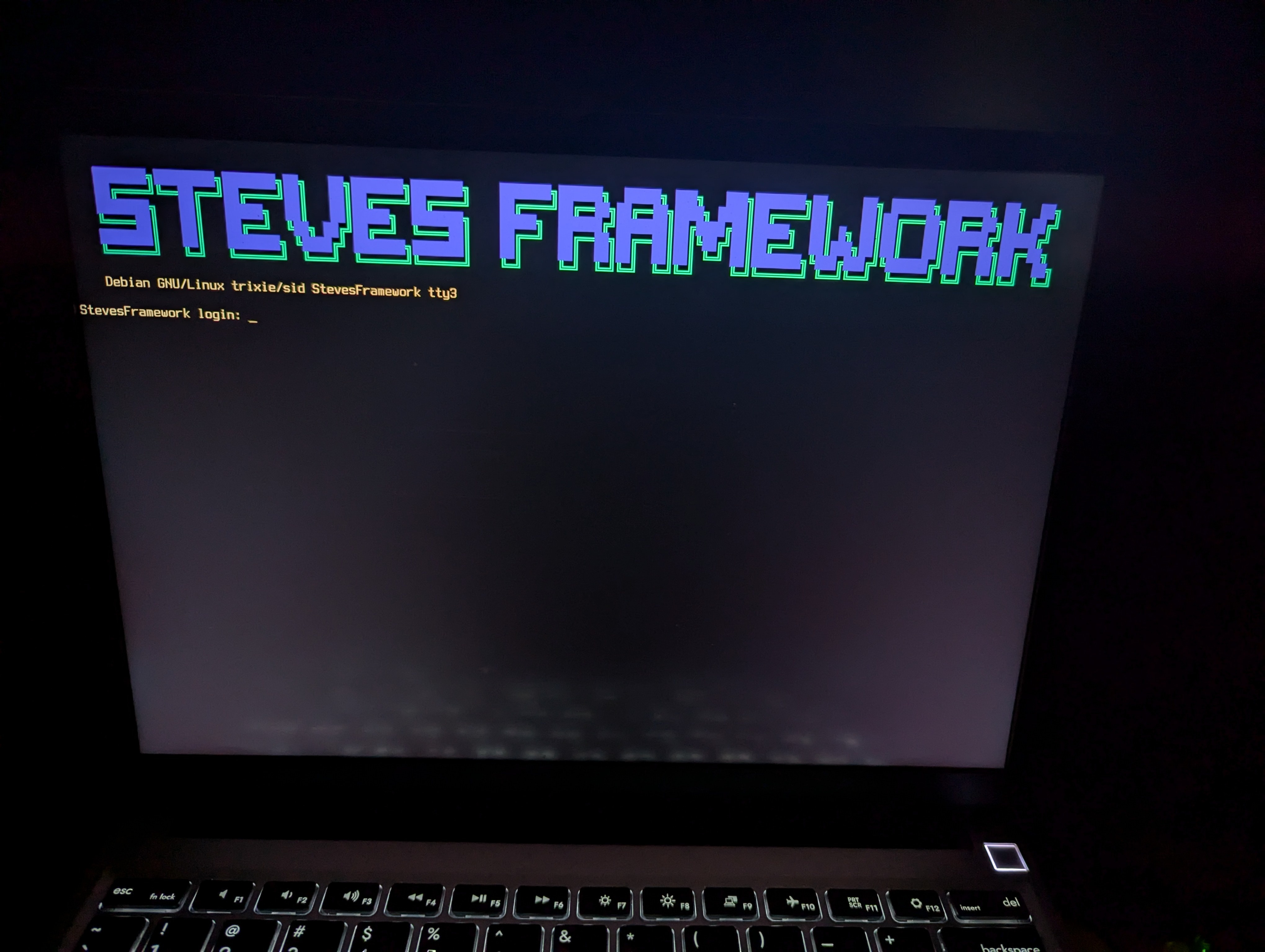You have to be on the March update, then go to Developer options -> Linux environment, and enable it. Then ‘Terminal’ will appear in your apps drawer.
- 1 Post
- 88 Comments

 7·2 months ago
7·2 months agoI hadn’t restarted my serial logger after I rebooted my laptop, leaving me with no clue about what caused the crash.
Probably way too late now, but if it was a proper kernel panic, it should’ve saved the dmesg in the kernel’s pstore which saves to either ACPI or EFI storage (depending on BIOS or UEFI), which systemd then extracts to
/var/lib/systemd/pstore/on next reboot.

 4·2 months ago
4·2 months agoOh damn, phoronix comments are usually bad, but they really got off the rails this time!

 16·3 months ago
16·3 months agoI couldn’t find a hard answer to whether this supports EPYC only, or Ryzen too; so I put together this script to read the CPUID to detect for
INVLPGBsupport according to the AMD64 Programmer’s Manual, and my 7800X3D does not supportINVLPGB.(Let me know if I’ve made an error though!)
Code
#include <stdio.h> #include <stdint.h> int main() { uint32_t eax, ebx, ecx, edx; eax = 0x80000008; __asm__ __volatile__ ( "cpuid" : "=a" (eax), "=b" (ebx), "=c" (ecx), "=d" (edx) : "a" (eax) ); printf("EBX: 0x%x\n", ebx); if (ebx & (1 << 3)) { printf("CPU supports INVLPGB\n"); } else { printf("CPU does not support INVLPGB\n"); } return 0; }

 10·3 months ago
10·3 months agoThat’s
INVLPGwhich has been there since the 486. The AMD64 Programmer’s Manual has some info on the differences betweenINVLPG,INVLPGA, andINVLPGBthough.

 55·5 months ago
55·5 months agoghostis just GitHub’s way of saying deleted user.
Not to defend them, but he did follow up with this:
This is referring to the technology we just released into BETA for premium subscribers, which delivers one of the lowest latencies for livestreaming (significantly better than YouTube’s latency).
This does not refer to encoding
https://xcancel.com/chrispavlovski/status/1856090182275215803
Although quality != latency, so idk.

 19·5 months ago
19·5 months agoTCP and UDP can listen on the same port, DNS is a great example of such. You’d generally need it to be part of the same process as ports are generally bound to the same process
They don’t even need to be the same process. I’m pretty sure that’s just a common practice if something needs both protocols, but there’s nothing stopping you from having a web server on TCP 443 and a VPN server on UDP 443. Ports are an abstraction brought by each protocol, they aren’t in anyway related.
Also if you tap on the ‘kebab’ menu and press
View Source, you can copy the message.

 3·7 months ago
3·7 months agoMy understanding is that most of that all lives in mesa, and the kernel driver basically just abstracts the hardware.

 12·7 months ago
12·7 months agoThere’s The Serial Port, It’s not really ‘home networks’, but he finds and sets up very early (~80-90s) ISP gear and explains how it works and the history of it. Similar to how Ben Eater uses an ‘old’ 6502 to explain stuff.

 5·7 months ago
5·7 months agoI’ve seen some that activate an insane number of breakpoints, so that the page freezes when the dev tools open. Although Firefox let’s you disable breaking on breakpoints all together, so it only really stops those that don’t know what they’re doing.

 1·7 months ago
1·7 months agoI have no idea how CoW interacts with NTFS
With btrfs you can disable COW for specific files, that might give you a little performance boost.

 1·8 months ago
1·8 months agoCloudflare tunnels uses a QUIC connection between the
cloudflaredon the server and Cloudflare itself, which is encrypted similarly to HTTPS.Whatever protocol
cloudflareduses to talk to your webserver locally is configurable through the Cloudflare access web UI (just change http to https). I’ve actually got it configured to use unix sockets, which lets me treat it differently in my nginx config.

 9·8 months ago
9·8 months agoIt’s probably blocked for whatever reason (maybe less than 90 days old?)
My work and Uni do the same thing, they don’t do full SSL inspection, so most websites don’t need a custom certificate authority; but if the SNI is blocked then they need a custom certificate to hijack and display a blocked message, most browsers will detect this as a MITM and display a not secure message instead.
Oh cool, I believe only 4bit colours are possible, you can use this table from Wikipedia and the escape sequence
\e[<FG>mreplacing<FG>with your chosen foreground colour. Also\e[0mto reset everything.funny how we use the same font XD
Haha yeah! I noticed that too!
I think I just used regex look aheads and look behinds to insert the colours easily.
Edit: Oh you can change that actual TTY font to a bigger one, if the text is too small too.
You can do colours as well!

IIRC the RTL chip inside them was originally designed for TV, so it works great! I’m actually using very cheap AliExpress clones for the TV ones, because they otherwise don’t work very well.
I’m also using the outdoor TV antenna on my roof (common in Australia, idk elsewhere), and a splitter and adaptors. And with that I get every channel with no artifacts, at 30% strength, but that’ll probably be higher with not awful SDRs.
I’ve got an interesting setup I’d like to share:
So I’ve got a Raspberry Pi with 4 RTL-SDRs, 2 for TV, 1 for radio, and 1 for plane transponders. That runs SatPi for the 2 TV SDRs, which TVHeadend running on my main server connects to, to record and stream. Jellyfin also connects to TVHeadend to properly index everything and for easy access to recordings and live TV.
Before other people start commenting ‘yeah obviously’, it’s their April Fools video, it’s pretty funny.